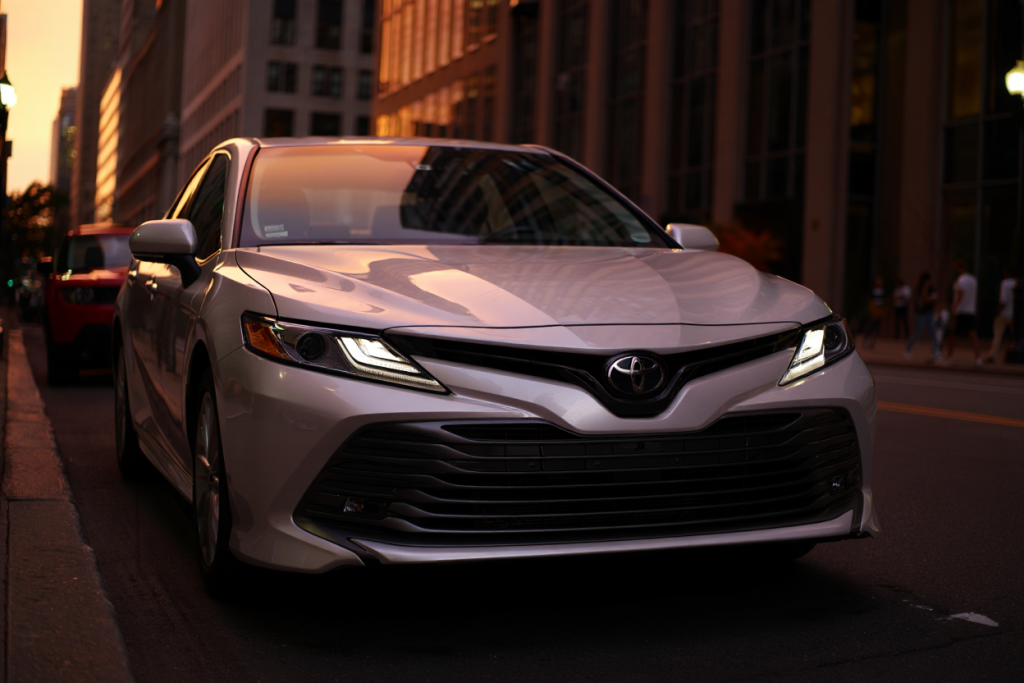The Toyota Corolla has been a top choice for drivers seeking reliability, affordability, and long-term performance. Today, buyers can choose between the Corolla Hybrid, which combines a gasoline engine with an electric motor, and the traditional gas-only model. While both offer dependable transportation, their maintenance needs differ significantly.
Understanding these differences is critical for saving money, avoiding unexpected repairs, and keeping your Corolla running smoothly. In this guide, we’ll break down the key maintenance distinctions, costs, and tips for both models, so you can make informed decisions about your vehicle’s care.
Engine and Powertrain Differences
The most obvious difference between the Corolla Hybrid and gas models is the powertrain. The hybrid system combines an electric motor with a gasoline engine, while the gas model relies solely on internal combustion. This distinction affects maintenance frequency, complexity, and costs.
Hybrid Engine Basics
- Combines a smaller gasoline engine with an electric motor and a high-voltage battery pack.
- Uses regenerative braking, which captures energy and reduces wear on traditional braking components.
- Fewer mechanical parts experience heavy stress, which often extends engine longevity.
Gasoline Engine Basics
- Conventional internal combustion engine powered entirely by gasoline.
- Requires standard maintenance like oil changes, spark plug replacement, and timing belt inspection.
- Brakes and engine components experience standard wear due to full reliance on mechanical energy.
Practical Example: A 2020 Corolla Hybrid owner reported needing brake replacement only after 60,000 miles, thanks to regenerative braking reducing wear. In contrast, a gas Corolla of the same age required two sets of brake pads.
Maintenance Impact
- Hybrid: Specialized knowledge required for battery and electric components. Fewer engine repairs but higher per-service cost if specialized hybrid parts need attention.
- Gas: Simpler maintenance but potentially more frequent minor repairs over time.
Pro Tip: Always follow Toyota’s scheduled maintenance guide, which specifies separate intervals for hybrid and gas models. Certified Toyota technicians are trained to handle hybrid systems safely.
Oil and Fluid Maintenance
While both models require fluids, hybrid Corollas and gas Corollas differ in oil types, intervals, and transmission maintenance. Proper fluid care ensures engine longevity, optimal fuel efficiency, and prevents costly repairs.
Engine Oil
- Hybrid: Often uses full synthetic oil, which can extend oil change intervals to 10,000 miles or more. The engine’s smaller size and lighter load reduce oil degradation.
- Gas: Typically requires oil changes every 5,000–7,500 miles depending on driving habits and oil type.
Example: Using conventional oil in a hybrid engine may lead to early wear, reduced efficiency, or even void warranty coverage. Stick to Toyota-recommended synthetic oil.
Transmission and Coolant Fluids
- Hybrid: Features a Continuously Variable Transmission (CVT) integrated with the electric motor. Hybrid cooling systems, including the inverter and battery coolant, require periodic inspection.
- Gas: Conventional automatic transmission fluid maintenance is simpler and involves periodic fluid checks and replacement every 60,000–100,000 miles.
Maintenance Tip: Even if your Corolla Hybrid has fewer mechanical components under stress, do not skip hybrid-specific coolant checks and inverter inspections. Neglecting these can lead to costly battery or motor failures.
Brake System and Tires
Braking and tire wear differ significantly between hybrid and gas Corollas due to regenerative braking and low-rolling-resistance tires in hybrids. Understanding these differences helps schedule proper maintenance and avoid surprises.
Regenerative Braking in Hybrids
- Converts kinetic energy into electricity, recharging the battery and reducing brake pad wear.
- Brake pads and rotors often last significantly longer than on a gas-only model.
- Brake fluid should still be checked according to schedule; regenerative braking does not eliminate maintenance entirely.
Gasoline Corolla Brakes
- Relies entirely on friction braking. Brake pads and rotors wear out faster.
- Frequent urban driving, stop-and-go traffic, or heavy braking accelerates wear.
- Pads may need replacement every 25,000–40,000 miles depending on driving conditions.
Example: A Corolla owner in a city with heavy traffic replaced gas model brake pads twice in 60,000 miles. The hybrid owner driving similar conditions only replaced pads once.
Tire Considerations
- Hybrid Models: Often equipped with low rolling resistance tires to maximize fuel efficiency. May have slightly stiffer compounds, which can impact ride comfort.
- Gas Models: Use standard tires optimized for grip and handling rather than fuel savings. Regular rotation and alignment remain essential.
Maintenance Tip: Regardless of model, check tire pressure monthly. Proper inflation improves fuel economy, handling, and extends tire life. Hybrid owners benefit even more since their efficiency depends on optimal rolling resistance.
Battery Maintenance and Longevity
The most notable maintenance difference between hybrid and gas Corollas is battery care. Hybrid vehicles rely on high-voltage battery packs, while gas models use a standard 12V battery. Understanding the differences can save significant repair costs.
Hybrid Battery Basics
- Typically a lithium-ion or nickel-metal hydride battery.
- Designed to last 8–10 years or 100,000–150,000 miles, depending on usage and climate.
- Maintenance includes regular inspections, checking cooling systems, and software updates at certified Toyota service centers.
Example: A 2018 Corolla Hybrid owner in a hot climate had their battery inspected at 7 years and found minimal degradation. Proper cooling and maintenance extended the battery’s lifespan, avoiding a costly replacement (~$3,000–$4,000).
Gasoline Vehicle Battery
- Standard 12V battery powers the starter, electronics, and accessories.
- Typically replaced every 3–5 years.
- Replacement is inexpensive (~$100–$200), widely available, and simple to install.
Cost Comparison
- Hybrid battery replacement is more expensive but infrequent.
- Gas battery replacement is cheap but occurs more often.
- Proper maintenance, like avoiding deep discharges and keeping hybrid batteries cool, significantly extends life.
Pro Tip: Never attempt DIY repairs on hybrid batteries; high voltage can be lethal. Always rely on certified Toyota technicians.
Scheduled Service and Inspections
Both hybrid and gas Corollas follow Toyota’s scheduled maintenance guide, but hybrid models include extra checks. Adhering to these schedules prevents costly repairs and ensures safety.
Hybrid-Specific Inspections
- Electric motor and inverter checks: Ensure smooth power delivery.
- Battery health diagnostics: Detect early degradation.
- Regenerative braking inspection: Check electronics and brake fluid levels.
Gas Model Inspections
- Engine tune-ups: Spark plug replacement, air and fuel filters, and oil changes.
- Transmission and exhaust checks: Maintain efficiency and emissions compliance.
- Brake inspection: Regular friction component checks since brakes wear faster than hybrids.
Cost and Time Differences
- Hybrid service can be slightly higher per visit but fewer major engine repairs may be needed.
- Gasoline service is simpler but may require more frequent minor maintenance.
Example: Over five years, a gas Corolla may require three engine-related services and two brake pad replacements, while a hybrid may require two battery inspections, two brake inspections, and fewer engine-related services, balancing the overall cost.
DIY Maintenance Tips for Corolla Owners
While some hybrid maintenance must be performed by certified technicians, owners can adopt simple DIY habits to reduce costs and improve reliability.
Hybrid-Friendly DIY Tips
- Tire Care: Maintain proper inflation; hybrid efficiency depends on optimal rolling resistance.
- Brake Checks: Even with regenerative braking, monitor pads for wear and fluid levels.
- Software Updates: Schedule updates at certified centers to optimize battery and motor performance.
Gasoline DIY Tips
- Oil Changes: Perform regular synthetic or recommended oil changes per manufacturer schedule.
- Filters and Spark Plugs: Air and cabin filters, plus spark plugs, are easy to inspect and replace.
- Fuel System Care: Use fuel additives if recommended and monitor for deposits or rough idling.
Pro Tip: Keep a log of all maintenance, including oil changes, tire rotations, and inspections. This not only extends car life but also helps resale value.
Cost Comparison: Hybrid vs. Gas
While hybrid Corollas save on fuel, maintenance costs differ. Understanding long-term costs helps owners budget and make informed decisions.
Typical Maintenance Costs
| Component | Corolla Hybrid | Corolla Gas |
| Oil Changes | $50–$70, every 10,000 miles | $30–$50, every 5,000–7,500 miles |
| Brake Pads | $150–$200, less frequent | $150–$200, more frequent |
| Battery | $3,000–$4,000, every 8–10 years | $100–$200, every 3–5 years |
| Engine Service | Minimal, fewer repairs | Standard tune-ups and repairs |
| Tire Maintenance | Slightly higher due to low rolling resistance tires | Standard rotation and replacement |
Fuel and Efficiency Savings
- Hybrid Corolla: 52 MPG combined (2025 model), significantly reducing fuel costs.
- Gas Corolla: 32–35 MPG combined, higher fuel costs but simpler mechanical repairs.
- Over 5–10 years, hybrid fuel savings often offset higher per-service costs.
Example: A commuter driving 15,000 miles annually could save over $1,500 in fuel with a hybrid, partially balancing the higher potential hybrid service costs.
Final Thoughts
Both Toyota Corolla Hybrid and Gas models are reliable, but their maintenance needs differ: Hybrid: Requires specialized inspections for battery, inverter, and regenerative braking. Fewer engine and brake repairs but higher per-service costs. Gas: Simpler, conventional maintenance. More frequent minor repairs and brake replacements, but lower individual service costs.
FAQs
How often should I service a Corolla Hybrid vs. Gas?
Hybrid: Follow Toyota’s hybrid schedule, typically every 10,000 miles for oil and battery inspection. Gas: Every 5,000–7,500 miles for oil changes and regular checks.
Are hybrid parts more expensive to replace?
Yes. Hybrid battery, inverter, and electric motor components are costly but long-lasting. Regular maintenance and inspections prevent premature replacement.
Does regenerative braking eliminate all brake maintenance?
No. Pads and rotors still wear over time. Regenerative braking reduces wear but inspections and fluid checks remain necessary.
Can I use the same oil in hybrid and gas models?
No. Hybrids require full synthetic oil meeting Toyota specifications, while gas models can use standard or synthetic blends as recommended.
What’s the lifespan difference for key components between models?
Hybrid engines often last longer due to lighter mechanical stress. Gas engines may require more frequent minor repairs but are simpler to service. Battery lifespan is the main differentiator.

Benjamin Grey is an automotive engineer and writer at Car Parts Advisor. With years of experience in the automotive industry, he shares expert advice on car parts, maintenance, and repairs to help car owners keep their vehicles running smoothly.






